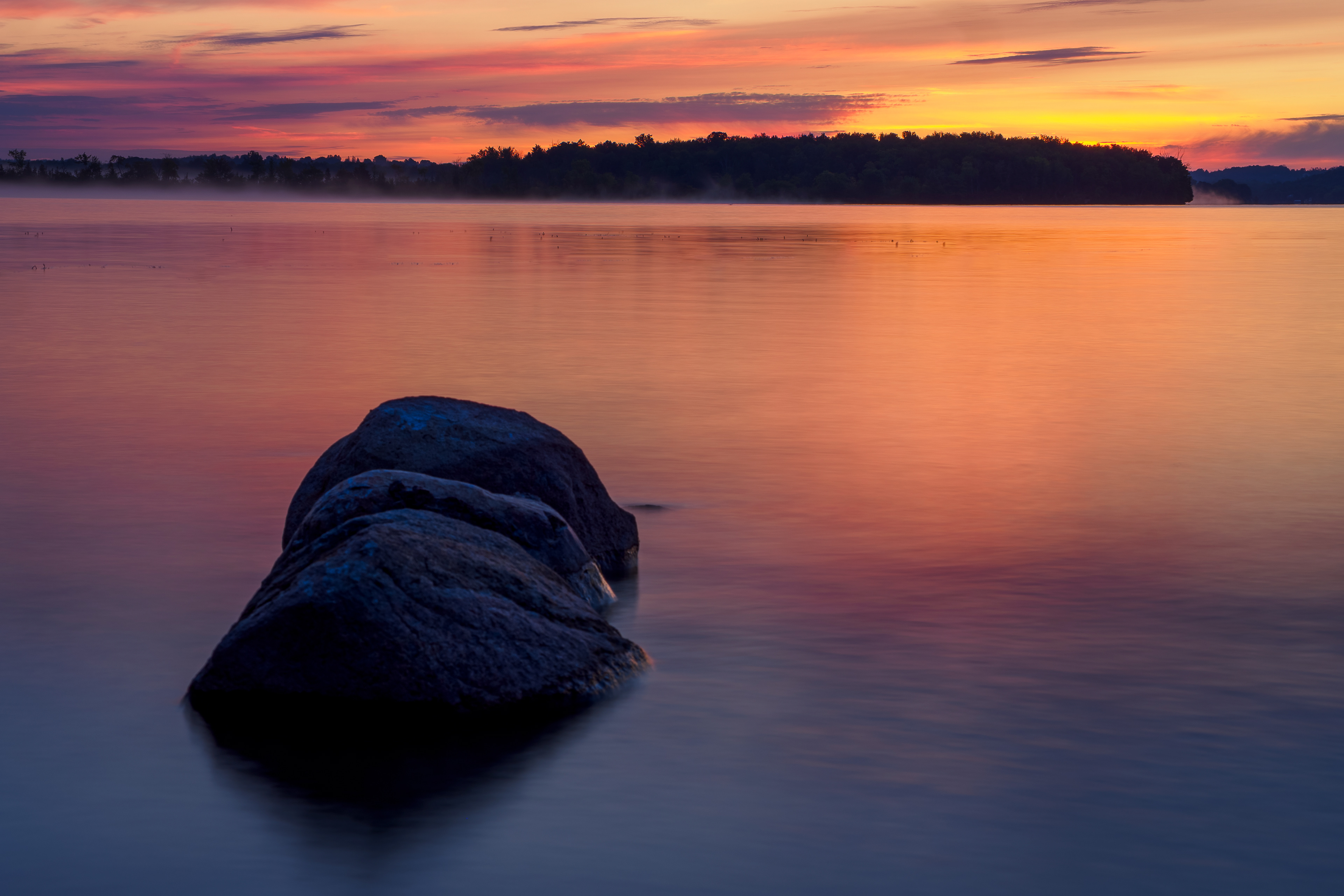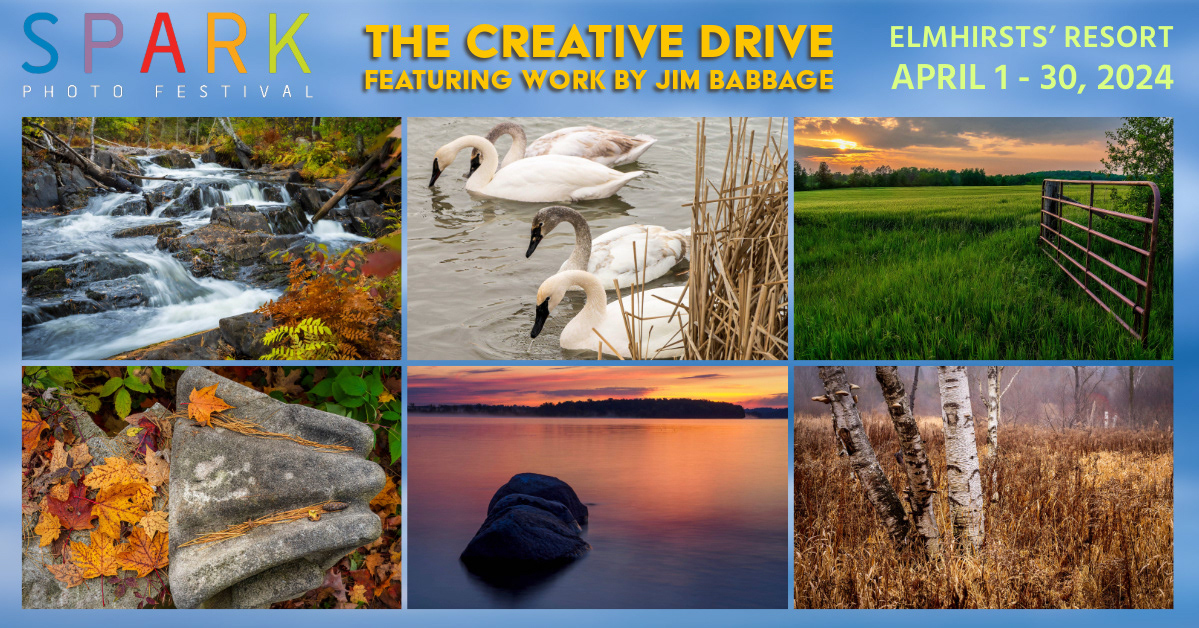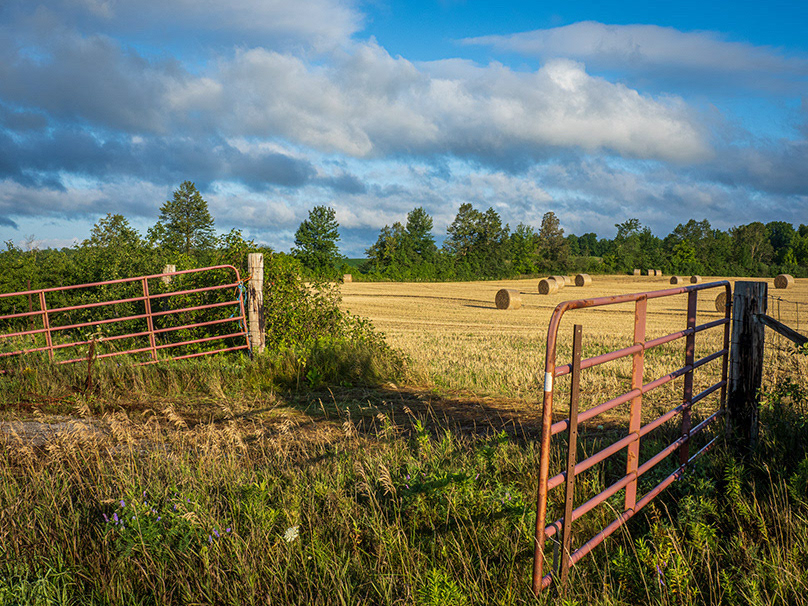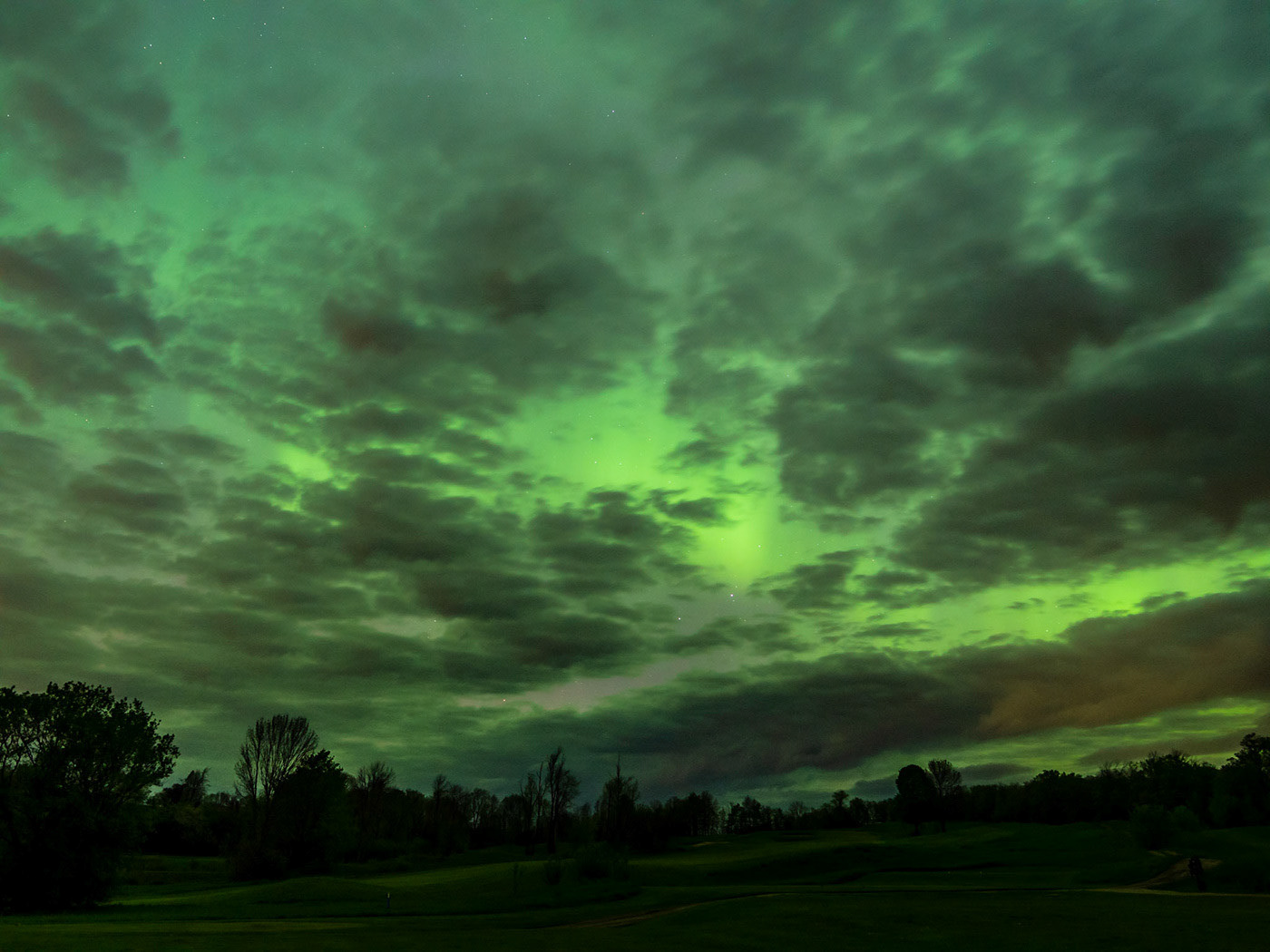Spark Photo Festival 2024 - The Creative Drive
It's that time of year again! The Spark Photo Festival is returning to the Kawartha region this April and I'm excited to once again be exhibiting with my cousin and fellow photographer, Stephanie Lake. Our theme this year is The Creative Drive (more on that later), and we've painstakingly curated our work to a maximum number of 8 prints each. You can see my 8 selections in the grid below. Click on any image for a larger view.








This year, we've opted to go bigger than usual (16x24 inches) and to print everything on canvas, for a more seamless, blended look to the exhibition. The larger size and limited number of images promise to result in more visual impact, while still being portable enough that an interested buyer could make a purchase and pop it in the car on their way home.
The limited number of prints will also (we hope) encourage users to really take the time to look deep into the scenes and - accompanied by our story cards - give the viewer more insight into the creative drive of each photographer.
As with past exhibitions, I'm using Adobe Express to generate social media content for my various channels, particularly Instagram and FaceBook. This tool makes it so easy to customize content and resize it to suit other aspect ratios.





I'm also experimenting with mobile apps that let me place my photos in realistic physical surroundings, to help promote how the photo might look in a home or office.
Exhibition Theme - The Creative Drive
Stephanie and I labored over the theme for this year's show. And what we came up with was a question; What drives us as photographers? Why do we do what we do? After a lot of talking, reflection and curating of work, we agreed on the following mission statement.
What moves someone to make a photograph? What is the impetus behind the decision to stop and grab your camera and then … wait … for that perfect, defining moment? What compels a photographer to visit the same location, over and over, at different times of year, planning to capture that scene when it is ready to tell its best story?
The answer to these questions is in the intrinsic creative drive of that photographer.
In this joint exhibition of Jim Babbage and Stephanie Lake, the decision was made to reproduce all images on canvas, all at the same dimensions, to help the viewer see beyond the frame and into the scene itself, to see more clearly what we as photographers saw at the moment of capture, to see what drives us as photographers.
Why, out of dozens or hundreds of photos, are certain ones chosen for printing or for an exhibition? We encourage to view these photographs and see if you, too can answer that question. Through these carefully curated images and accompanying short stories, Jim and Stephanie hope you can gain an insight into the elusive “why.”
As in the past, the work will be on display during the Spark Photo Festival from April 1-30 at Elmhirst's Resort on the north shore of Rice Lake, a short drive from Peterborough, Ontario.
Editing Workflow
More and more, AI is the hot topic in any field, from productivity to creativity, and photography is a huge part of that discussion, too.
One can argue that a photographer starts to manipulate the scene in front of them the moment they raise the camera to their eye; lens choice, framing, viewpoint, exposure...all these aspects of photography impact how the final image is viewed. I think of AI - specifically, Generative AI - as just another tool, another choice to make, when creating my final image.
In producing the images for the upcoming show, it's important to me that you know AI was used in some images to fine-tune the final work or - at the very least - assist in scaling the image to a suitable size for larger-scale printing. However, no image was manipulated in a significant fashion, in my opinion.
In the interest of that transparency, below are three edit replays I made using Lightroom (and jazzed up with music by using Adobe Express), that demonstrate how my final images came to be. In the case of the second and third videos, I added the final image at the end, as there was some processing performed in Photoshop to remove distracting elements.
Is There a Place for AI in Photography?
As you might have guessed, my stance on this question is yes. And it starts at the time of capture. Many modern-day digital cameras are making use of computational photography (forms of on-board AI) to allow for functions like in-camera panorama stitching, focus stacking, high-resolution capture modes, even the ability to dial in a digital Neutral Density filter without the need for a physical ND filter. Auto-focus systems are becoming smarter, faster, more accurate and more selective thanks to AI built into the processor.
I've written several articles on the topic of practical uses for AI in photography. In fact, two of the images in my exhibition are the subject of other Generative AI articles I've recently written:
I believe these tools, when used responsibly, ethically and transparently, can be a huge boon to photographers, without compromising the creative work they have set out to do. I don't think any photographer gives a second thought to color-tuning their images, or removing dust spots or a piece of litter in the landscape. I treat these AI tools in the same manner. New, AI-based tools like Denoise AI in Lightroom, or the Remove tool in Lightroom and Photoshop employ on-board AI to make them effective. The latest iteration of Topaz Photo AI is a phenomenally granular tool for upscaling an image while maintaining quality. And of course, the integration of Adobe Firefly into Photoshop in the form of Generative Fill (AI-based Content Aware Fill) and Generative Expand can take work to another level.
The original capture from more than 10 years ago is outlined in white and did NOT include the yellow canoe. Generative Fill in Photoshop allowed me to realistically expand the image beyond its original frame. While this image is not part of my exhibition, I have printed it at 8x10 dimensions and the results are impressive, putting this image more in the category of photo-illustration than true photograph.
Responsible Use of AI
I want to stress that these tools should be used responsibly. I admit, as an artist, I have far more leeway in how - or if - I use these tools to enhance a capture of mine. It's about what I see in my mind's eye; my personal vision and story. If my goal is to be documentary in my captures, then I would need to abstain from using many of these tools.
Adobe and hundreds of other companies - including camera manufacturers - are taking steps to help the global audience understand the provenance of any image that is captured and share digitally, through the Content Authenticity Initiative and by including these controls in applications like Photoshop.
While this digital "ingredient label" isn't apparent on a printed work, I do my best by sharing my thoughts and techniques through the series of aforementioned articles on my Behance portfolio.
Wrapping Up
Well, that's enough time on that soapbox! Our joint exhibition, The Creative Drive will be on display for viewing and sale from April 1-30 at Elmhirst's Resort on the north shore of Rice Lake, a short drive from Peterborough, Ontario. I hope to see you there or hear from you if you get a chance to visit the show.
Until next time!










